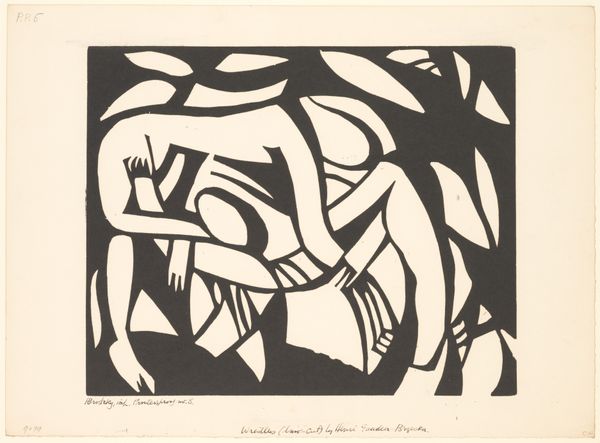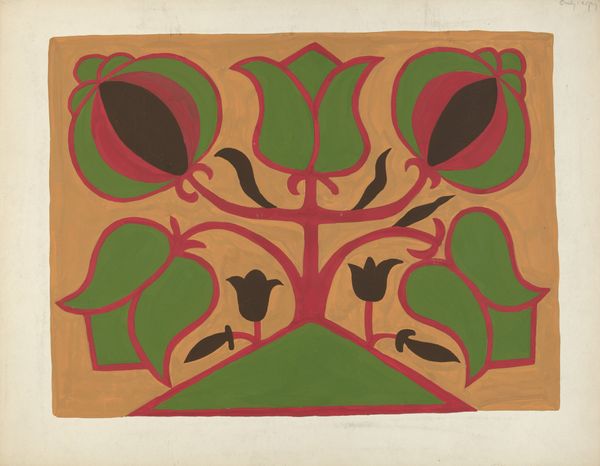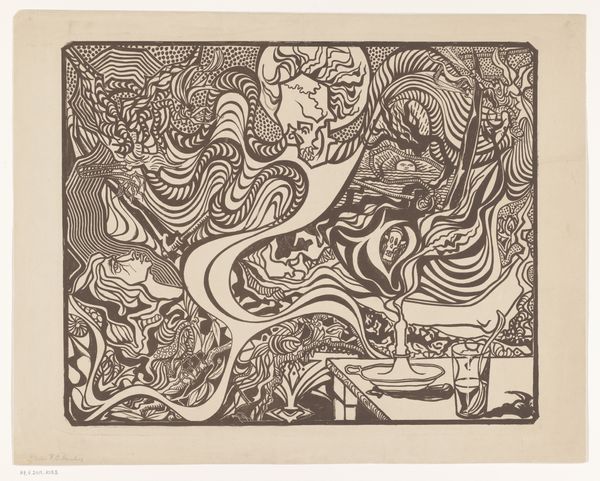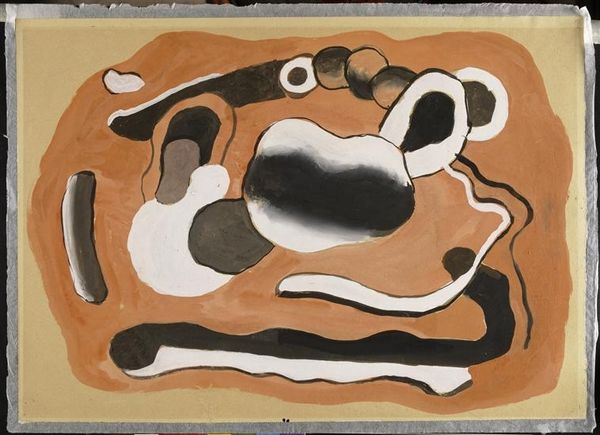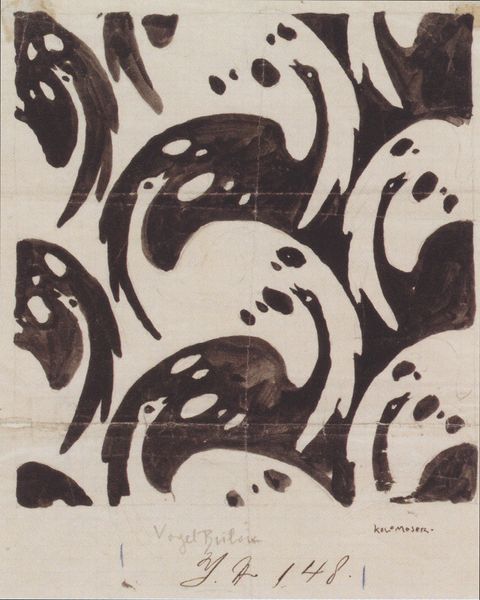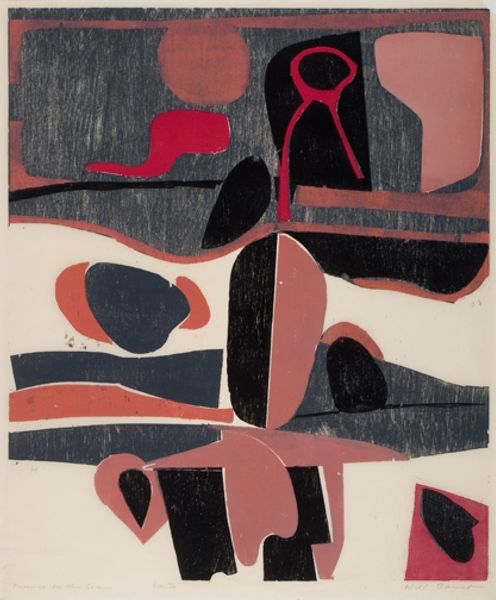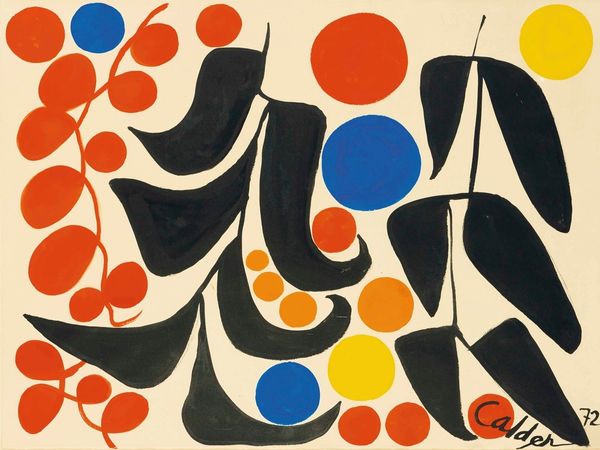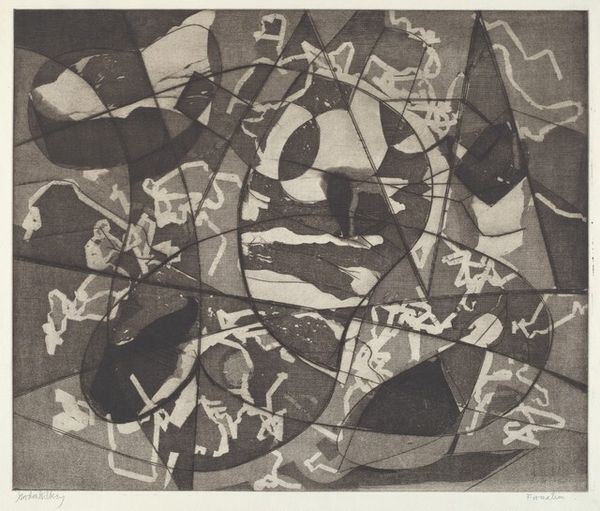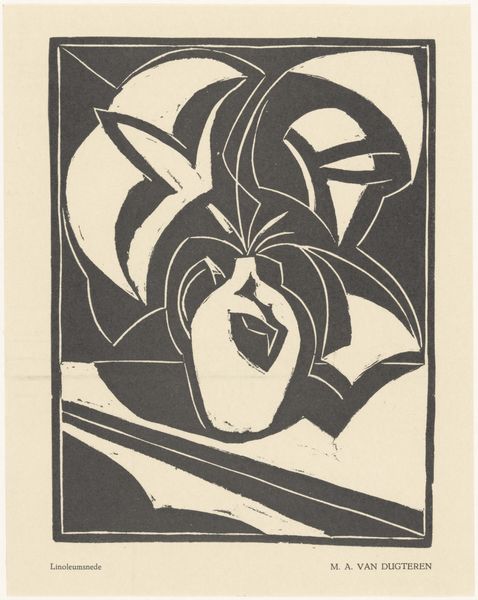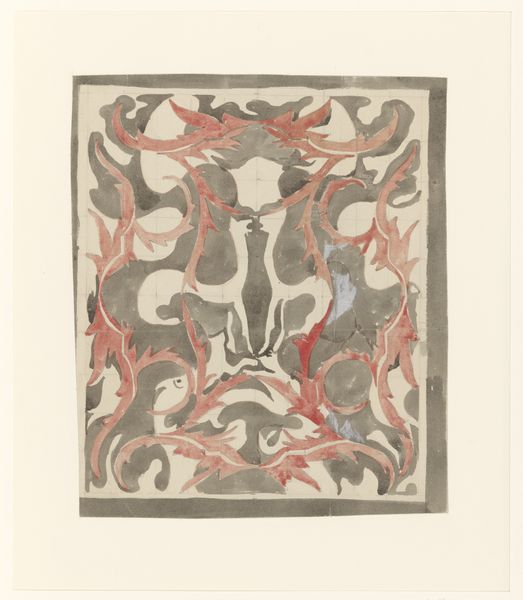
Copyright: Modern Artists: Artvee
Curator: Picasso's "Picador," a woodcut from 1959, presents such a striking array of shapes! What's your initial take? Editor: It’s chaotic, almost aggressively so. The monochrome palette and abstracted forms seem to push and pull against each other. Definitely not peaceful. Curator: Right. Consider how the dynamic interplay of light and shadow evokes a powerful, almost violent, energy reminiscent of the bullfight itself. This reflects Picasso’s longstanding fascination with the corrida. The imagery is quite evocative. Editor: It does channel that intense, ritualized drama. I'm interested in the institutional aspect: How do such images function within the broader history of bullfighting as a public spectacle, carefully constructed for certain audiences? Does the art perpetuate or critique this spectacle? Curator: It’s a fair question. Symbolically, the picador figure, traditionally tasked with weakening the bull, becomes part of a broader narrative of struggle and power. I read the fragmented forms as symbolizing the fractured nature of identity under duress, reflecting, perhaps, the anxieties of the post-war period. Editor: Interesting perspective. But beyond personal or collective anxiety, I see a negotiation between artistic expression and political commentary, carefully curated for gallery display and public consumption. How complicit is the art in reinforcing structures of power, even as it appears to deconstruct them? Curator: Indeed, Picasso was definitely not shy in confronting many socio-cultural anxieties in a way that, perhaps, forced society to contend with some truths they'd rather sweep under the rug. Even the limitations of a medium like woodcut, with its graphic nature, enhances the feeling of conflict and raw emotionality. Editor: And that tension itself – the artwork as both a reflection and a construction of its time - holds immense power. Thanks for exploring this with me; this made me reframe the artist’s intention through a different lens. Curator: My pleasure; examining how universal human conditions translate through visual culture is really enriching.
Comments
No comments
Be the first to comment and join the conversation on the ultimate creative platform.
